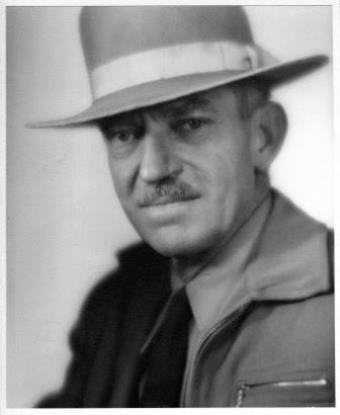Last updated: February 8, 2022
Person
Earl Morris

Earl Halstead Morris was an American archeologist active in Mesoamerica and the United States southwest. "Earl, in from Boulder, met me at the Denver station - khakis, leather leggings, stiff-brimmed Stetson - most dependable man the Lord ever made," wrote his friend Alfred Kidder in 1938. Remembered as a pioneer in southwestern archeology, Morris is known for his excavation and restoration work as well as his photography skills.
Earl's fascination with archeology started at a young age, encouraged by his father who was an avid pot hunter. In 1908, Earl entered the University of Colorado to study psychology. He joined an excavation with Edgar J. Hewett at Bandalier National Monument in 1911 and dropped out of school in 1912 to join him at an excavation at Quirigua, Guatemala. Earl conducted excavations through the University of Colorado Museum in the area east of Mesa Verde near the La Plata river in 1913 and at Quirigua in 1914. Morris earned his Bachelor’s degree in Psychology in 1914 and Master's degree in 1916. He spent 1917 as a graduate student at Columbia University.
Between 1916 and 1923, Earl was the director of excavation at Aztec Ruin in northwestern New Mexico for the American Museum of Natural History. From 1924 to 1929, Earl worked as the director of excavations on behalf of the Carnegie Institution at Chichen Itza on the Yucatan peninsula, Mexico. In between seasons in Mexico, he worked at Canyon de Chelly, sites near Shiprock, New Mexico, the Mimbres valley in Grant County, New Meixco, Kawaika-A on the Hopi Reservation in Arizona, and at various basketmaker sites near Durango, Colorado. As a result of this work, he developed a body of evidence for distinct chronological periods in the history of the southwest, which were published in his book, Archaeological Studies in the La Plata District. In the early 1930s, Earl also supervised restoration projects, including the tower at Mummy Cave, Canyon del Muerto; the Great Kiva at Aztec Ruins National Monument; and several structures in Mesa Verde National Park. Earl worked at numerous other sites throughout the southwest.
In 1923, Earl Morris married Ann Axtell, who herself became a famous archeologist, artist, and author. They had two daughters, Elizabeth Ann and Sarah Lane. Elizabeth studied Anthropology at the University of Arizona, and following in her parents footsteps, became an Archaeologist and Professor at Colorado State University.
Earl received numerous awards. The University of Colorado awarded him Norlin Medal in 1931 and an honorary Doctor of Science in 1942. He received the Alfred Vincent Kidder medal for achievement in southwest and Mesoamerican archaeology in 1953.
Selected Works:
Morris, Earl H.
1919 The Aztec Ruin. Anthropological Papers of the American Museum of Natural History, Volume XXVI. New York City, NY: American Museum of Natural History.
1921 The House of the Great Kiva at the Aztec Ruin. Anthropological Papers of the American Museum of Natural History, Volume XXVI, Part II. New York City, NY: American Museum of Natural History.
1939 Archaeological Studies in the La Plata District. Carnegie Institute of Washington.
Morris, Earl H., Ann Morris and Jean Charlot
1931 The Temple of the Warriors at Chichen Itza, Yucatan. Carrnegie Institution of Washington.
Sources:
Burgh, Robert
n.d. Earl Halstead Morris, 1889-1956. American Anthropologist, Vol. 59, Iss. 3.
Kidder, Alfred
1957 Earl Halstead Morris. 1889-1956. American Antiquity, Vol. 22, No. 4,, pp. 390-397.
Lister, Florence C. and Robert H. Lister
1977 Earl Morris & Southwestern Archaeology. University of New Mexico Press.
